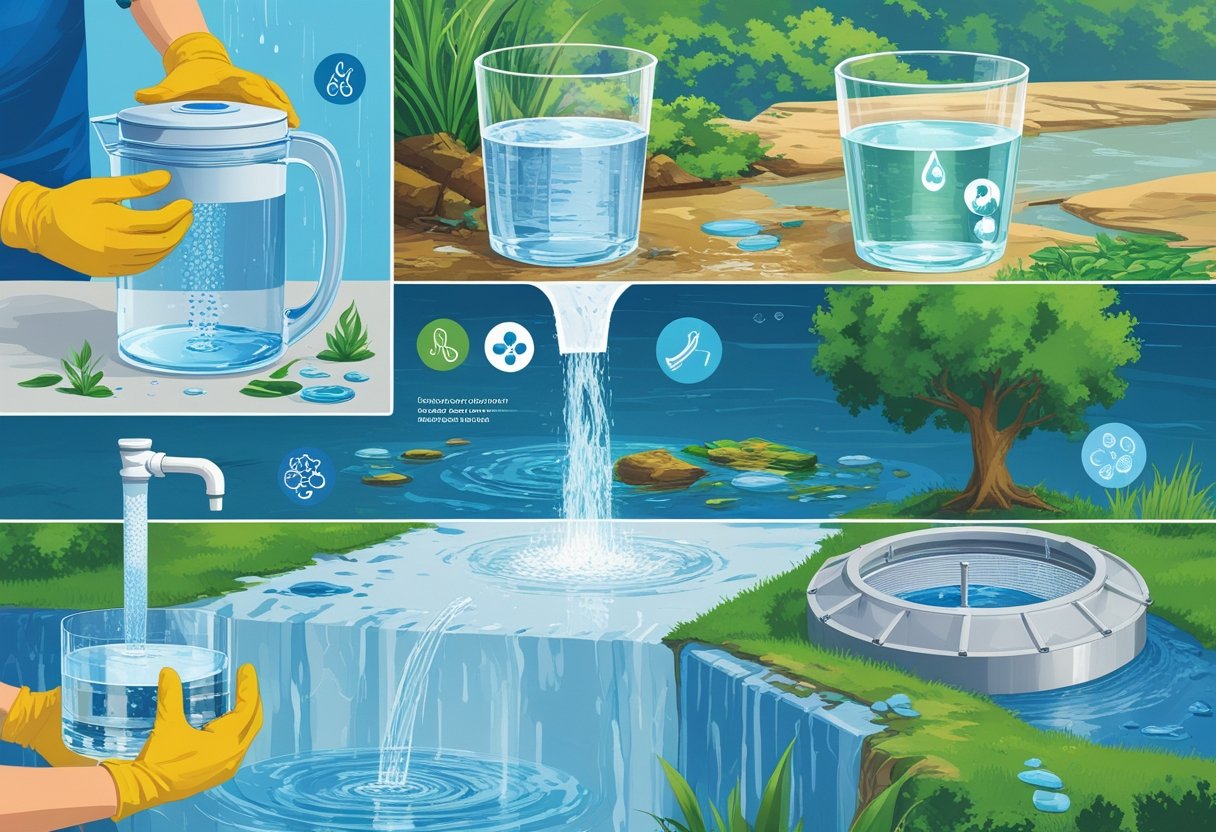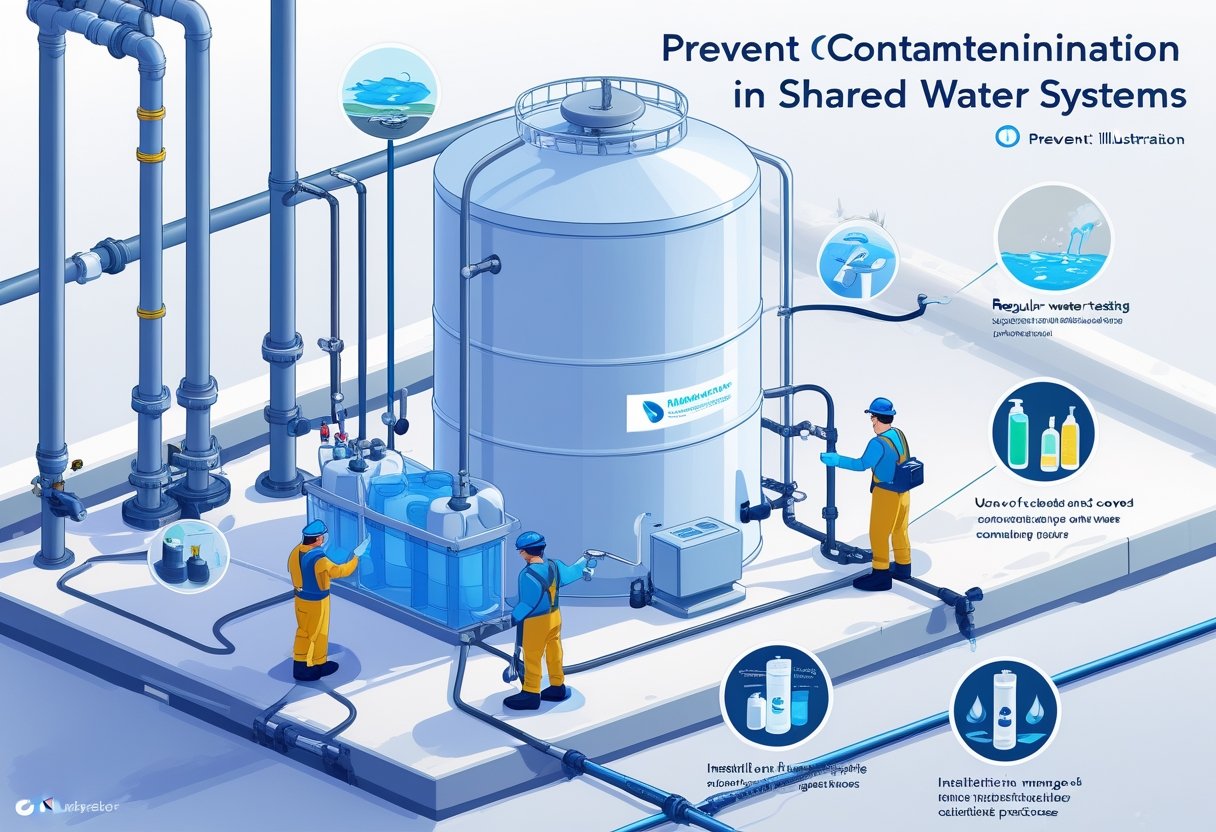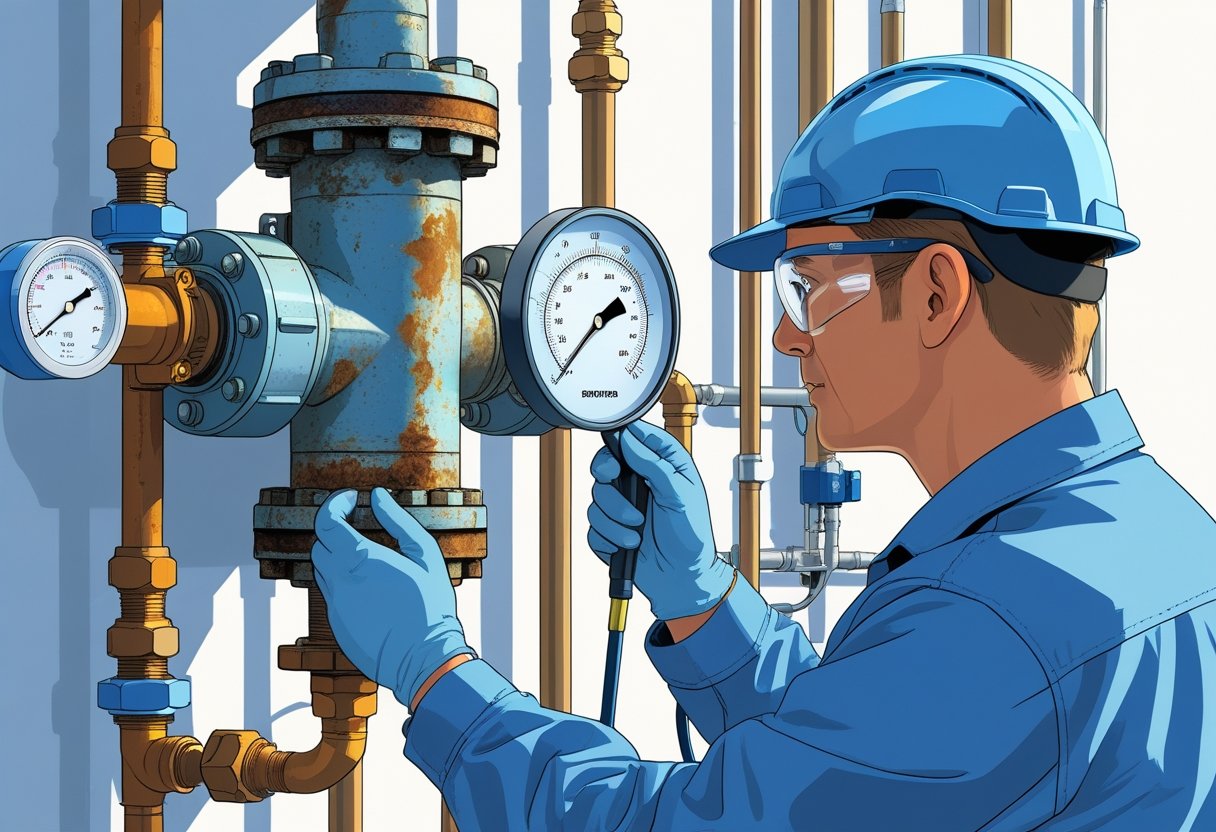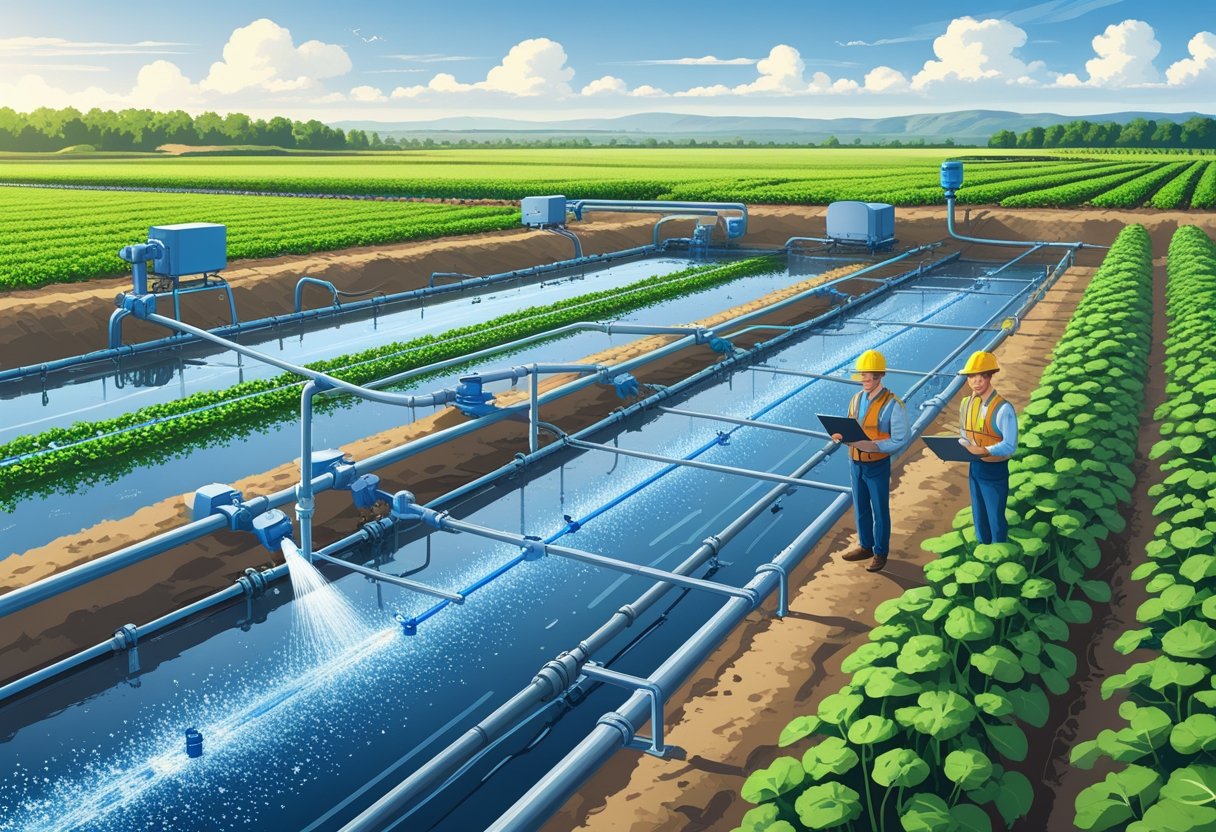Ensuring the safety of your drinking water is crucial for your health and the health of your family. You can significantly reduce contamination in your drinking water by taking proactive measures, such as regular testing and maintaining your backflow prevention systems. With the right strategies in place, you can protect your home from harmful pollutants and ensure access to clean water.
Regular backflow testing is one effective way to ensure the integrity of your water supply. At Pacific Backflow, we offer comprehensive backflow testing services to guarantee that your system is functioning properly and compliant with local regulations. By scheduling annual tests, you can identify potential issues before they become serious problems.
In addition to testing, proper maintenance and timely repairs of your backflow preventers are essential. If issues are detected, our skilled technicians at Pacific Backflow can help you with repairs or replacements, ensuring your water supply remains uncontaminated. Taking these steps not only safeguards your health but also contributes to the well-being of your community.
Understanding Drinking Water Contamination
Drinking water contamination poses a significant risk to your health and well-being. Recognizing the sources and types of contaminants, understanding how they enter your water supply, and being aware of the health consequences are critical for ensuring safe water consumption.
Common Sources and Types of Contaminants
Contaminants in drinking water can originate from a variety of sources. Common contaminants include:
- Microbial: Bacteria, viruses, and parasites often enter water supplies through sewage and human waste.
- Chemical: Pesticides, nitrates from agricultural runoff, and heavy metals like lead and arsenic can seep into groundwater and surface water.
- Physical: Sediment or particulate matter can affect water clarity and quality, frequently resulting from construction activities.
Sources of drinking water can include groundwater from aquifers, rivers, lakes, and reservoirs. It is essential to recognize that pollution can affect both groundwater and surface water, making it crucial to monitor the quality of all available sources.
How Drinking Water Becomes Contaminated
Drinking water can become contaminated through various pathways. Some key mechanisms include:
- Runoff: Rainwater can wash pollutants into local water sources, especially in agricultural areas.
- Leaking Infrastructure: Aging pipes and outdated treatment facilities can allow contaminants to infiltrate the water supply.
- Improper Disposal: Household chemicals or pharmaceuticals discarded incorrectly can leach into groundwater.
Regular testing of your water quality helps identify potential contaminants. Services like those offered by Pacific Backflow help ensure your system remains compliant with safety standards.
Health Risks Associated With Contaminated Drinking Water
The health risks of consuming contaminated drinking water vary depending on the type and level of contaminants. Potential impacts include:
- Short-term Effects: Symptoms such as nausea, diarrhea, and stomach cramps may occur from microbial contamination.
- Long-term Effects: Chronic exposure to contaminants like heavy metals can lead to neurological disorders, reproductive issues, and increased cancer risk.
- Developmental Risks: Children exposed to high levels of certain contaminants may face developmental delays.
Being aware of these risks underscores the importance of maintaining clean drinking water through effective management and testing. Regularly engaging professional services like those from Pacific Backflow can help safeguard your water supply.
Protecting and Managing Water Sources
Effective management of water sources is crucial for ensuring clean and safe drinking water. Implementing specific protective strategies can greatly reduce the risk of contamination. Key actions include leveraging watershed management, adopting safe agricultural practices, and minimizing chemical runoff from residential areas.
Source Water Protection Strategies
Protecting drinking water starts with identifying areas that contribute to your water supply. Engage in community efforts to safeguard these areas against pollutants. This might involve creating buffer zones around water bodies, promoting responsible waste disposal, and educating the public on how sewage and chemicals can infiltrate groundwater. Collaborate with local authorities to maintain these protective measures, ensuring that all stakeholders are aware of their responsibilities. Regular assessments can help identify any new threats to the water supply. You can also consider participating in initiatives that focus on educating your community about the significance of water quality and how you can collectively uphold it.
Role of Watershed Management
Watershed management focuses on maintaining the health of the environment to protect water resources. A well-managed watershed considers the balance of ecosystems and human activities. Measures include restoring native vegetation, which enhances filtration and reduces runoff. Additionally, controlling erosion can prevent sediment from clogging waterways. Participate in local programs that aim to monitor and improve water quality in your watershed. Investing in sustainable practices, such as recharge projects for aquifers, ensures the longevity of groundwater resources. By supporting these management practices, you contribute to a holistic approach that benefits both the environment and community health.
Preventing Runoff From Lawn and Garden Chemicals
Using fertilizers and pesticides wisely is critical for minimizing their impact on drinking water. Over-application not only wastes money but also increases the chances of chemical runoff into nearby streams and groundwater. Choose environmentally-friendly options and apply them according to recommended rates. Additionally, consider implementing practices such as composting and using mulches to reduce the need for synthetic chemicals. Regularly inspect your landscape for leaks or spills and take immediate action to contain any issues. Participating in educational workshops can further enhance your understanding of best practices for maintaining healthy gardens without compromising water quality. By adopting these strategies, you can effectively protect the local water supply while enjoying a vibrant outdoor space.
Reducing Household and Community Pollution
Addressing pollution at the household and community levels is essential to protecting drinking water sources. Focusing on safe disposal, minimizing harmful substances, and maintaining infrastructure can significantly reduce contamination risks.
Safe Disposal of Hazardous Waste and Medications
Proper disposal of hazardous waste and medications prevents harmful substances from contaminating waterways. Always check local regulations to identify designated disposal sites. Many municipalities provide special collection days for hazardous waste, ensuring safe handling and disposal.
For medications, avoid flushing them down the toilet as they can enter the water supply. Instead, use take-back programs offered by pharmacies or local organizations. If those options aren’t available, mix medications with an unpalatable substance, seal them in a container, and place them in the trash. Your proactive actions contribute to protecting the environment from dangerous pollutants.
Minimizing Use of Harmful Chemicals
Reducing the use of harmful chemicals in your household and gardening practices directly benefits water quality. Choose eco-friendly products or natural alternatives for cleaning and lawn care. For instance, vinegar, baking soda, and lemon juice are effective cleaning agents that minimize chemical runoff.
When managing your garden, avoid synthetic fertilizers and pesticides that can leach into groundwater. Instead, opt for organic options or integrated pest management techniques. Not only does this safeguard your local ecosystem, but it also promotes healthier soil and water bodies in your community.
Maintaining Septic Systems and Infrastructure
Regular maintenance of septic systems is crucial for preventing leaks and contamination. Schedule inspections every three years and pump your system every three to five years, depending on usage. A failing septic system can release pollutants into the groundwater, affecting drinking water supplies.
In addition, ensure that your septic system complies with local regulations. Know the location of your system and avoid planting trees or large shrubs nearby, as roots can infiltrate and damage the system. Proper care ensures that your system operates efficiently, safeguarding the water supply for you and your neighbors.
For reliable backflow testing and maintenance of your plumbing, consider reaching out to Pacific Backflow, serving all of San Diego County. Their expertise guarantees safe and compliant systems, contributing to community health.
Water Quality Monitoring and Reporting
Monitoring water quality is crucial for ensuring that drinking water remains safe and free from contaminants. Effective reporting systems empower consumers and enhances public trust in water supplies.
Consumer Confidence Reports and Water Quality Reports
Consumer Confidence Reports (CCRs) are essential tools that inform you about your drinking water quality. These annual reports detail contaminants detected in your local water supply and whether they meet safety standards. They include information on the water source, treatment processes, and any violations of health-based standards.
Public water systems are required to distribute these reports to consumers, often through mail or online channels. Water quality reports supplement CCRs, providing a broader view of overall water health and enabling you to understand the status of your local water provider. Familiarize yourself with these documents to make informed decisions about your water consumption.
Understanding Source Water Assessments
Source water assessments evaluate the potential contamination risk to your drinking water sources, such as rivers, lakes, or aquifers. They help identify potential pollutants and land use practices that could threaten water quality. Understanding these assessments empowers you to advocate for better protections in your community.
Water utilities conduct these assessments to develop strategies for mitigating risks and to prioritize necessary actions for safeguarding drinking water. If you're concerned about the quality of your local water supply, reviewing your area's source water assessment can provide valuable insights into vulnerabilities and help you engage with local lawmakers regarding protective measures.
Testing and Monitoring Drinking Water at Home
You can take proactive steps to ensure the safety of your drinking water by conducting home water testing. Various kits are available that analyze for common contaminants like lead, nitrates, or bacteria. Regular testing can give you peace of mind and inform you about any potential issues.
If discrepancies arise, it’s essential to contact your water utility to verify local water quality reports. Pacific Backflow, for instance, offers backflow testing and reporting services that ensure your system complies with health regulations. Whether you’re a homeowner or business, staying informed about water quality testing helps you maintain a safe environment for your family or customers.
Water Treatment Solutions
Addressing contamination in drinking water requires a variety of effective treatment options. These solutions span public systems to individual home setups, ensuring safety and compliance with water quality standards.
Public Water System Treatments
Public water systems employ multiple treatment processes to ensure safe drinking water. Key steps include coagulation, where chemicals are added to form clumps of particles for easy removal.
Filtration follows, removing contaminants through layers of sand and gravel. Disinfection is critical, typically achieved with chlorine or ultraviolet light, which eliminates pathogens.
Water utilities continuously monitor chemical levels and microbial content to maintain compliance with the EPA regulations and ensure water safety. Regular testing and maintenance of treatment plants enhance the reliability of public drinking water supplies.
Home Filtration and Purification Options
If you're considering home water treatment, various filtration systems are available to meet your needs. Common options include carbon filters, which effectively remove chlorine and volatile organic compounds, and reverse osmosis systems that eliminate a wide range of contaminants, including heavy metals and bacteria.
Ultraviolet (UV) treatment systems can also be beneficial, targeting harmful microorganisms without adding chemicals to your water. Selecting the right system requires testing your water to identify specific contaminants you wish to eliminate.
Pacific Backflow offers testing services that help you understand which home filtration systems would be best suited for your situation.
Maintaining Treatment Devices
Regular maintenance of water treatment devices ensures they operate effectively and safely. For filtration systems, regularly replace filters as recommended by the manufacturer to maintain clear, safe water.
If using a backflow prevention device, annual testing is vital. Pacific Backflow provides reliable backflow testing to ensure that your backflow preventer is functioning properly.
Keep records of all maintenance activities and repairs. This will help you track performance and comply with local regulations. Promptly addressing any issues can prevent more significant problems, protecting your water supply efficiently.
Frequently Asked Questions
Understanding how to reduce contamination in drinking water is essential. This section addresses specific questions related to prevention methods, effective treatment options, community protection strategies, and actions for larger-scale solutions.
How can we prevent contamination in our household drinking water?
To prevent contamination, ensure regular maintenance of plumbing systems. Install backflow preventers to protect against reverse contamination from external sources. Scheduling annual testing with professionals like Pacific Backflow will help keep your water supply safe and compliant.
What methods are effective in making water safe to drink?
There are several methods to ensure water safety. Boiling water kills most pathogens, while filtration systems can remove impurities. Consider installing home water treatment systems that comply with health standards for optimal safety.
What steps can individuals take to protect community water resources?
Participating in local clean-up events and reporting leaks or unusual changes in water quality helps protect community resources. Educating neighbors about proper waste disposal and encouraging responsible pesticide use can also contribute significantly.
What are some common practices for keeping water sources clean?
Avoiding chemical run-off by using eco-friendly fertilizers is important. Properly disposing of hazardous materials and not flushing chemicals down the toilet helps keep water sources clean. Regular inspection and maintenance of stormwater drains also play a vital role.
What actions can be taken to address the issue of contaminated drinking water?
Addressing contaminated water can involve implementing public health initiatives focused on awareness and education. Support legislation aimed at improving water infrastructure and advocate for regular testing of public water supplies.
How can water contamination problems be solved on a larger scale?
On a larger scale, enhancing regulatory measures can reduce contamination risks. Investing in advanced filtration and treatment technologies will protect entire communities. Collaboration among government agencies, private businesses, and the public is essential to develop effective long-term solutions.











